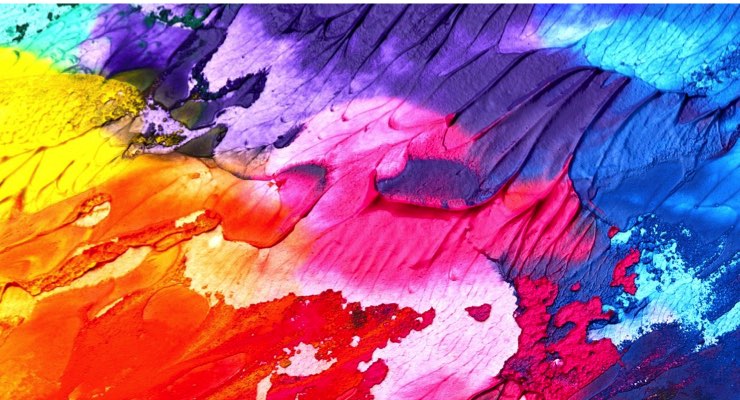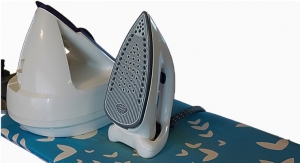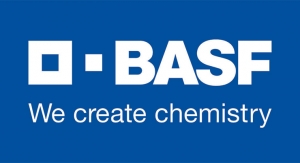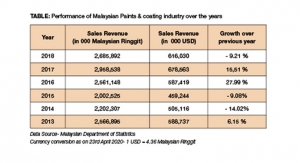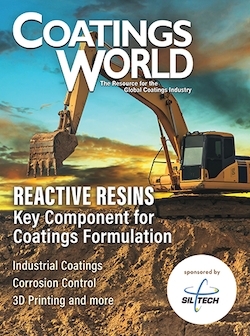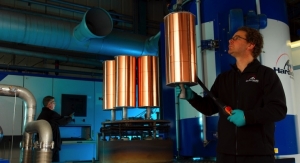In terms of volume, Asia Pacific held a major share of the global inorganic color pigments market in 2019.
This trend is anticipated to continue during the forecast period.
The demand for construction materials has been increasing across the globe, owing to the continuous rise in demand for housing triggered by growth in the global population.
Inorganic color pigments are used as colorants in various construction materials. This boosts the demand for inorganic color pigments in the construction materials sector.
The growth of the automotive industry is estimated to propel the automotive paints & coatings sector over the next few years. This, in turn, is projected to drive the demand for inorganic color pigments during the forecast period.
The production of plastics has been rising significantly across the globe, owing to the increase in demand for plastics in packaging, automotive, and building & construction industries.
Unique and advantageous properties of plastics have enabled the material to be used as a substitute for wood, paper, and rubber. Inorganic color pigments are widely employed in the production of polymers that are used in the manufacture of plastic products. An increase in plastic production is likely to drive the inorganic color pigments market during the forecast period.
In terms of product type, the inorganic color pigments market has been segmented into cobalt pigments, ultramarine pigments, bismuth pigments, iron & iron oxide pigments, cadmium pigments, chromium pigments, and others.
In terms of value, the iron & iron oxide pigments segment dominated the inorganic color pigments market in 2019.
Iron & iron oxide pigments are used to color construction materials such as concrete mixes, concrete blocks, mortars, bricks, paving blocks, roofing tiles, and designer tiles.
Furthermore, dispersible grades of iron & iron oxide pigments are employed in the paints & coatings and plastics industries to impart coloring effects.
These pigments are widely used in the inorganic color pigments market, as they provide uniformity in color and tinting strength.
Based on form, the inorganic color pigments market has been bifurcated into powder and aqueous.
In terms of value and volume, the powder segment constituted a significant share of the inorganic color pigments market in 2019. Stringent regulations imposed by REACH and U.S.E.P.A. and a ban on the use of inorganic color pigments in several countries are projected to restrain the aqueous segment during the forecast period.
The market share of the aqueous segment is expected to decline during the forecast period due to stringent regulations on VOC emission.
Based on the application, the inorganic color pigments market has been segregated into paints & coatings, printing inks, polymers, construction materials, cosmetics, textile printing, and others.
In terms of value and volume, the paints & coatings segment constituted a significant share of the inorganic color pigments market in 2019.
Inorganic color pigments improve the opacity and gloss of paints and coatings.
They also provide color. Furthermore, inorganic color pigments perform protective functions by offering resistance to light, heat, and chemicals. They are employed in architectural paints, decorative coatings, and protective coatings.
Based on region, the inorganic color pigments market has been classified into North America, Europe, Asia Pacific, Latin America, and Middle East & Africa.
The inorganic color pigments market in Asia Pacific is projected to expand at a CAGR of ~5% during the forecast period. The U.S. accounted for a large share of the market in North America in 2019. In terms of demand, the inorganic color pigments market in Canada is likely to expand at a moderate pace during the forecast period.
The implementation of stringent regulations related to the usage of pigments is expected to adversely impact the inorganic color pigments in North America and Europe.
The global inorganic color pigments market was moderately consolidated with the presence of small and medium scale manufacturers in 2019.
In 2015, LANXESS completed the construction of an inorganic pigments plant in Ningbo and China that would specifically produce iron oxide pigments. The total investment at the Ningbo site stood at ~$70 million for an initial annual synthesis capacity of 25,000 metric tons.
In 2016, Ferro Corporation acquired Cappelle Pigments, a Belgium-based company engaged in the manufacture of high-performance inorganic and organic pigments used in coatings, inks, and plastics.
In 2018, Dominion Color Corporation (DCC) and LANSCO Colors announced plans to merge in order to meet the demand for pigments. Dominion Color Corporation provides innovative pigments and dispersions.
It provides services to manufacturers of coatings, plastics, and inks. The company has manufacturing facilities in Canada, the Netherlands, and the U.K.

